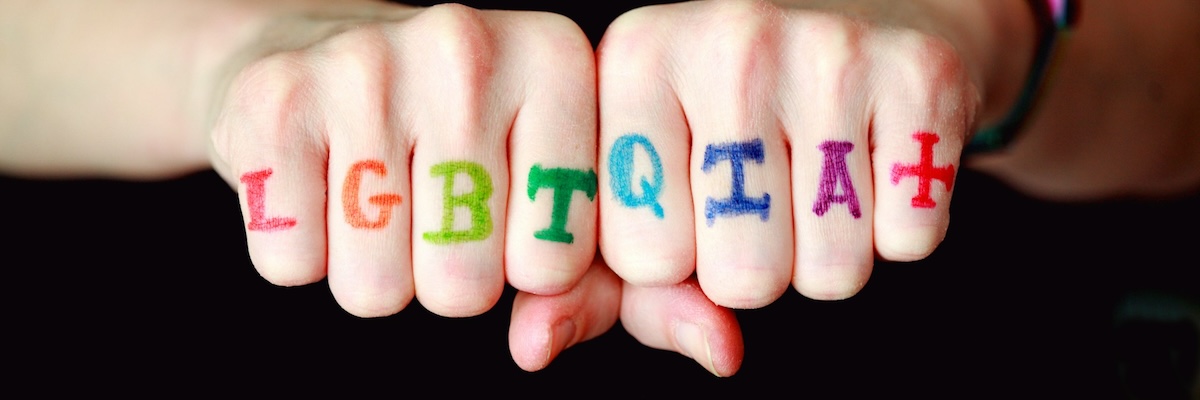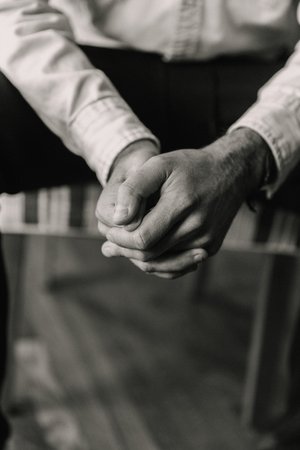Trans Day of Visibility is an important day dedicated to celebrating and recognizing the transgender community worldwide. This annual observance, held on March 31st, aims to raise awareness about the challenges and discrimination faced by transgender individuals while also celebrating their resilience, strength, and contributions to society. In this article, we will delve deeper into the origins, significance, celebrations, and challenges associated with Trans Day of Visibility, shedding light on why this day is crucial for promoting understanding, acceptance, and equality for the transgender community. Join us as we explore the history and impact of Trans Day of Visibility and learn how you can show your support and solidarity with transgender individuals on this special day.
Understanding the Basics: Definitions and Key Concepts
To fully grasp the significance of Trans Day of Visibility, it is essential to understand the basic definitions and key concepts surrounding transgender identity. Here, we will provide a comprehensive overview of the terminology and concepts related to transgender individuals:1. Transgender:
Transgender is an umbrella term used to describe individuals whose gender identity differs from the sex assigned to them at birth. It is important to note that gender identity is not determined by physical characteristics but rather by one’s inner sense of being male, female, or non-binary.2. Gender Identity:
This refers to a person’s deeply-felt sense of their own gender, which may or may not align with the sex assigned to them at birth. Gender identity is not limited to the binary categories of male or female and can encompass a range of identities including non-binary, genderqueer, or genderfluid.3. Cisgender:
Cisgender individuals are those whose gender identity aligns with the sex assigned to them at birth. For example, someone who is assigned male at birth and identifies as male is considered cisgender.4. Transition:
Transition is the process through which transgender individuals align their physical appearance, social roles, and personal identity with their gender identity. This may involve various steps such as hormone therapy, gender-affirming surgeries, changing one’s name and pronouns, and seeking support from healthcare professionals.5. Gender Dysphoria:
Gender dysphoria refers to the distress or discomfort experienced by individuals whose gender identity does not align with the sex assigned to them at birth. This condition can manifest in various ways, and it is important to provide support and understanding to those experiencing gender dysphoria.6. Pronouns:
Pronouns are linguistic tools used to refer to individuals in the third person. It is crucial to respect and use the correct pronouns preferred by transgender individuals. Some common pronouns include he/him, she/her, and they/them, although many individuals may prefer alternative pronouns.7. Transphobia:
Transphobia refers to the prejudice, discrimination, and hostility directed towards transgender individuals. It can manifest in various forms, including verbal abuse, physical violence, denial of basic rights, and systemic marginalization. Understanding these basic definitions and key concepts is fundamental in promoting empathy, respect, and inclusivity towards transgender individuals. Now that we have established a foundation, let’s dive into the history and origins of Trans Day of Visibility.History of Trans Day of Visibility
Trans Day of Visibility has a rich history that traces back to its inception. In this section, we will explore the origin, founders, significant moments, and the evolution of this important day of recognition for the transgender community.Origin and Founders:
Trans Day of Visibility was first observed on March 31st, 2009. It was created by Rachel Crandall, a transgender activist from Michigan, USA. Crandall aimed to establish a day that would celebrate transgender individuals and raise awareness about the challenges they face.Significant Moments in Its History:
Since its establishment, Trans Day of Visibility has gained significant recognition and momentum. Here are some notable milestones:- Early Years: In the initial years, Trans Day of Visibility gained visibility primarily through social media platforms, where individuals shared their stories, experiences, and messages of support.
- Global Recognition: Trans Day of Visibility quickly gained international recognition, with individuals and organizations from around the world joining in to celebrate and advocate for transgender rights.
- Increased Awareness: As the day gained traction, media outlets started covering Trans Day of Visibility, increasing public awareness and understanding about the unique challenges faced by transgender individuals.
- Official Proclamations: Various cities, states, and even countries began officially recognizing Trans Day of Visibility and issuing proclamations in support of transgender rights and visibility. For example, in 2014, the city of San Francisco officially declared March 31st as Transgender Day of Visibility.
How It Has Evolved Over Time:
Over the years, Trans Day of Visibility has evolved and grown in scope. It has become a platform for advocacy, education, and celebration. Here are a few ways in which it has evolved:- Increased Participation: The number of individuals and organizations participating in Trans Day of Visibility has grown significantly, leading to a broader reach and impact.
- Diverse Representation: The day now encompasses a more diverse range of transgender experiences and identities, including non-binary, genderqueer, and gender non-conforming individuals.
- Intersectionality: Trans Day of Visibility has embraced an intersectional approach, recognizing the unique challenges faced by transgender individuals of different races, ethnicities, religions, abilities, and socio-economic backgrounds.
- Digital Activism: With the rise of social media and online platforms, Trans Day of Visibility has expanded its reach through hashtags, online campaigns, and virtual events, allowing for global participation and amplification of voices.
Significance of Trans Day of Visibility
Trans Day of Visibility holds immense significance for the transgender community and society at large. In this section, we will explore why this day is important, the impact it has on individuals and communities, and how it contributes to the fight for transgender rights.Why It’s Important for the Transgender Community:
- Visibility and Recognition: Trans Day of Visibility provides an opportunity for transgender individuals to be seen, heard, and celebrated. It acknowledges their existence, experiences, and contributions, which helps combat erasure and invisibility.
- Validation and Empowerment: The day fosters a sense of validation and empowerment for transgender individuals, affirming their identities and challenging societal norms that often marginalize or invalidate their experiences.
- Community Building: Trans Day of Visibility brings together transgender individuals, allies, and organizations, fostering a sense of community and solidarity. It provides a platform for sharing stories, building connections, and advocating for collective rights and well-being.
Impact on Society and Culture:
- Education and Awareness: Trans Day of Visibility plays a crucial role in educating the general public about transgender identities, experiences, and rights. It helps challenge stereotypes, myths, and misconceptions, fostering a more inclusive and understanding society.
- Reducing stigma and discrimination: By increasing visibility and promoting positive representations of transgender individuals, Trans Day of Visibility helps combat stigma and discrimination. It contributes to creating a safer and more accepting environment for transgender people.
- Promoting Equality and Social Justice: Trans Day of Visibility aligns with broader movements for LGBTQ+ rights and social justice. It highlights the need for equal rights, protections, and opportunities for transgender individuals, advocating for a more equitable society.
How It Contributes to the Fight for Transgender Rights:
- Policy and Legal Change: Trans Day of Visibility serves as a platform to advocate for policy and legal changes that protect and advance transgender rights. It raises awareness about discriminatory practices and fosters support for inclusive legislation.
- Challenging Systemic Oppression: The day brings attention to the systemic barriers and oppression faced by transgender individuals, encouraging collective action and mobilization to challenge and dismantle these structures.
- Inspiring Activism: Trans Day of Visibility inspires activism at all levels, from grassroots community organizing to international advocacy. It encourages individuals to become advocates, allies, and agents of change in the fight for transgender rights.
How Trans Day of Visibility is Celebrated
Trans Day of Visibility is celebrated in various ways, with activities and traditions that aim to uplift transgender individuals, promote awareness, and foster a sense of community. In this section, we will explore common activities and traditions associated with the celebration of Trans Day of Visibility.Common Activities and Traditions:
- Community Gatherings and Events: Many cities and communities organize events such as marches, rallies, panel discussions, and workshops to commemorate Trans Day of Visibility. These gatherings provide spaces for transgender individuals, allies, and advocates to come together, share experiences, and build solidarity.
- Artistic Expressions: Art plays a significant role in celebrating Trans Day of Visibility. Transgender artists showcase their talents through various mediums, including visual art, music, poetry, and performances. These artistic expressions serve as a powerful means of storytelling, representation, and empowerment.
- Visibility Campaigns: Social media campaigns, hashtags, and online initiatives are commonly used to amplify transgender voices and stories. People share their experiences, challenges, and achievements, using the hashtag #TransDayofVisibility to create a collective narrative that reaches a wide audience.
- Educational Workshops and Panels: Educational events and workshops are organized to provide information about transgender identities, rights, and issues. These sessions aim to increase understanding and promote allyship among individuals who may not be familiar with transgender experiences.
Ways to Participate:
- Show Support on Social Media: Use social media platforms to share positive and affirming messages, personal stories, or educational resources related to Trans Day of Visibility. Utilize the hashtag #TransDayofVisibility to contribute to the online conversation and raise awareness.
- Attend Local Events: Check for local events organized in your community to commemorate Trans Day of Visibility. Participate in marches, rallies, or panel discussions to show support for the transgender community and learn from their experiences.
- Educate Yourself: Take the opportunity to educate yourself about transgender identities, rights, and issues. Read books, articles, and watch documentaries that provide insights into transgender experiences and the challenges faced by the community.
- Support Transgender Organizations: Donate to or volunteer with organizations that support transgender individuals and advocate for their rights. These organizations often provide vital resources, support networks, and services for the community.
How Different Countries and Cultures Observe the Day:
Trans Day of Visibility is celebrated globally, with different countries and cultures adapting their own unique ways of observing the day. Some countries may hold large-scale events and parades, while others focus on community gatherings or awareness campaigns. It is important to recognize and respect the cultural nuances and local contexts in which Trans Day of Visibility is observed. By participating in the celebrations and activities surrounding Trans Day of Visibility, individuals can contribute to creating a more inclusive and accepting society. In the next section, we will explore the controversies and challenges associated with this day and the efforts made to overcome them.Controversies and Challenges Associated with Trans Day of Visibility
While Trans Day of Visibility is an important and empowering observance, it is not without its controversies and challenges. In this section, we will explore some of the criticisms and opposition faced by this day, the challenges experienced by the transgender community, and the efforts made to overcome these obstacles.Criticism and Opposition:
- Transphobia and Prejudice: Transgender visibility challenges societal norms and can evoke negative reactions from individuals who hold biased beliefs or prejudices against transgender people. Trans Day of Visibility often faces opposition from individuals and groups who harbor transphobic attitudes.
- Misunderstanding and Ignorance: Lack of understanding about transgender identities and experiences can lead to misconceptions and misinformation. Some critics argue that Trans Day of Visibility is unnecessary or promotes a “special treatment” narrative, stemming from a lack of awareness or empathy.
- Political Backlash: The fight for transgender rights and visibility can face political opposition and backlash from conservative or anti-LGBTQ+ groups. This opposition may manifest in attempts to roll back transgender-inclusive policies or stigmatize transgender individuals.
Challenges Faced by the Transgender Community:
- Discrimination and Violence: Transgender individuals often face high levels of discrimination, harassment, and violence in various aspects of their lives, including healthcare, employment, housing, and education. The lack of legal protections and societal acceptance exacerbates these challenges.
- Limited Access to Healthcare: Transgender individuals may encounter barriers when seeking gender-affirming healthcare, including hormone therapy and gender-affirming surgeries. Limited access to competent healthcare providers and insurance coverage can result in significant challenges.
- Mental Health and Well-being: Transgender individuals are at a higher risk of experiencing mental health issues, such as depression, anxiety, and suicidal ideation. The stigma, discrimination, and lack of support can contribute to these challenges.
Efforts to Overcome These Challenges:
- Advocacy and Education: Transgender activists and organizations work tirelessly to raise awareness, challenge stereotypes, and promote understanding about transgender identities and experiences. They advocate for policies that protect transgender rights and combat discrimination.
- Legal Protections and Policy Changes: There are ongoing efforts to implement legal protections for transgender individuals, including anti-discrimination laws, healthcare access reforms, and the inclusion of gender identity in non-discrimination policies.
- Community Support and Resources: Organizations and support networks provide crucial resources, safe spaces, and support services for transgender individuals. These initiatives aim to address the challenges faced by the community and promote their well-being.
- Allyship and Solidarity: Allies play a vital role in supporting transgender individuals and challenging transphobia. By educating themselves, amplifying transgender voices, and advocating for inclusive policies, allies can help create a more accepting and supportive society.


















